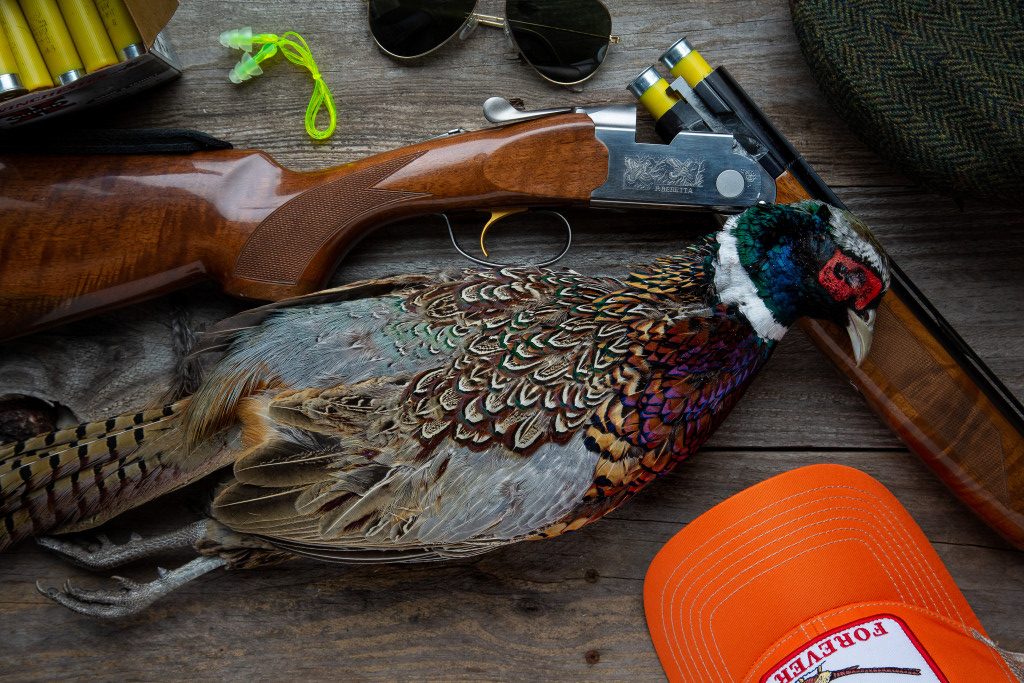
Story and photos by Jenny Nguyen-Wheatley
I’m 5 feet 2 inches, female, right-handed and left-eye dominant. Out-of-the-box firearms typically don’t fit me, and youth models have made poor substitutes. As if learning to shoot at a flying target, left handed, wasn’t difficult enough – throw in an ill-fitting gun and it becomes a recipe for frustration.
I took up shooting and hunting in my early 20s. My husband, Rick, introduced me to it, and since then, my journey has been like a roller coaster, one that broke down a lot and got stuck in inconvenient places. I am satisfactory with the rifle – decent enough to get venison in the freezer, anyway – but wing shooting was another story. The most disappointing part was I really wanted to be good at it.
If I had to pick between dozing off in a deer blind or walking a pheasant field, I’d choose upland hunting nine times out of 10. There’s just something about walking under big sky, toting an over-under and following dogs that I find more romantic than anything else. Sadly, I let several failed attempts on the range and in the field defeat me. I didn’t touch my Beretta Whitewing for years. That is – until I picked it up again last summer.
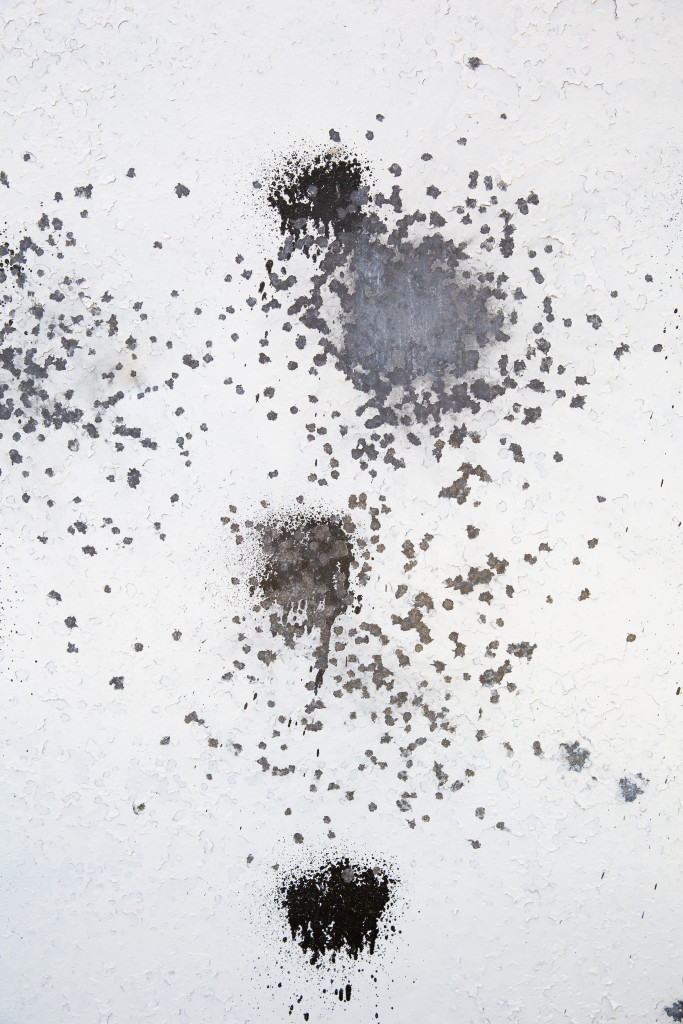
In summer 2019, Rick and I received an invitation to hunt grouse in western Nebraska. The opportunity was too good to pass up, and I’ll admit, the fear of looking like a fool dug into my sides the hardest. I asked around and got connected with a shooting instructor in Blair. I figured that with a few pointers, I’d be up and running by the fall. Alas, my journey toward becoming a better upland hunter wasn’t as simple as I’d hoped.
To put it simply: My gun was made for a right-handed shooter, which meant that in a left-handed shooter’s hands, it was inaccurate.
Shooting coach Greg Preston said I had two options: I could take a chance and buy a left-handed gun or I could see a gunsmith to modify what I already have. After fruitless hours researching left-handed shotgun options for vertically-challenged women, which were virtually nonexistent, I decided it would be more economical to see a local gunsmith.
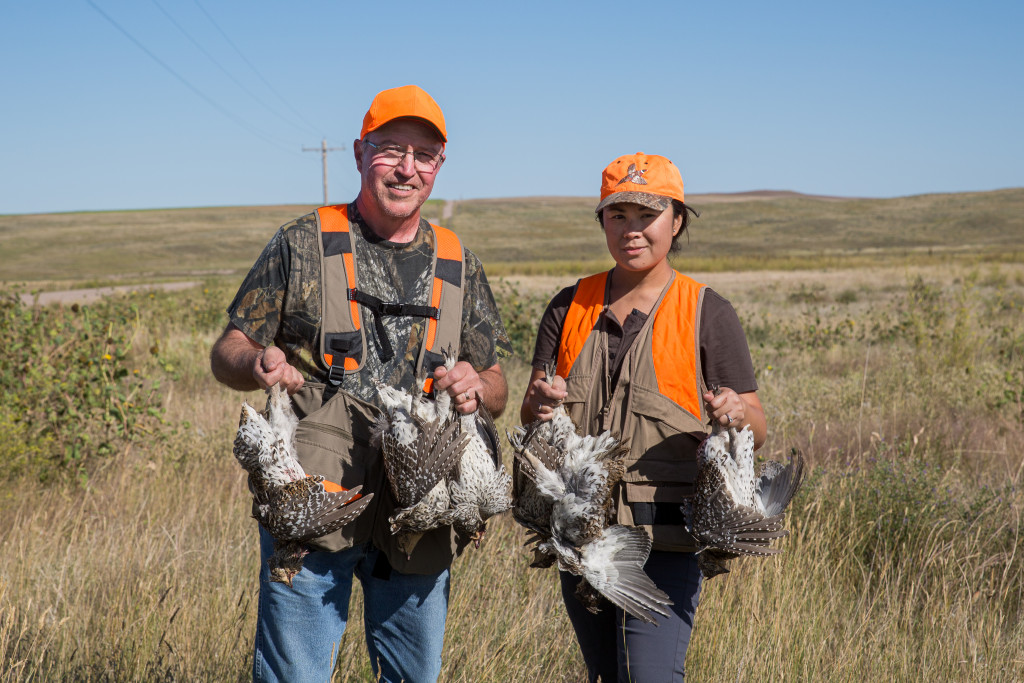
Now that I had made the decision to “stick to my gun,” the task of finding a willing, knowledgeable gunsmith turned out to be surprisingly complicated. After what seemed like a wild goose chase, the third gunsmith was the charm: Stephen Reynolds at Midwest Gunstocks was the man. He cut down my gunstock to shorten the length of pull, shifted the gun’s cast to fit a left-handed shooter and stuck on foam to temporarily heighten the comb to adjust my shotgun’s drop. Stephen was also generous with his knowledge. He took the time to explain what he was doing and kept in contact with Greg throughout the entire process.
It was a solid month and a half from the time I first met with Greg to when I was finally able to hit targets over a trap house. I got in two shooting lessons before my grouse hunt out west, fewer than I had hoped, but still, I felt good about it. My gun was finally shooting where my eye was looking, and if I missed – which was often, still – then it was on me. The difference was that I could actually see where I was making mistakes and improve.
I had more fun on that September grouse hunt than I had in a long time. I successfully connected with my first sharp-tailed grouse and experienced that heart-pounding, gut-wringing miss on my only chance at a greater prairie chicken.
My shotgun recently went back to Stephen for installation of a permanently raised cheek piece, and I look forward to getting back out to the shooting range this summer with Greg. But more than ever before, I’m excited about this upcoming upland season, and that’s because this time, I’ll be ready.
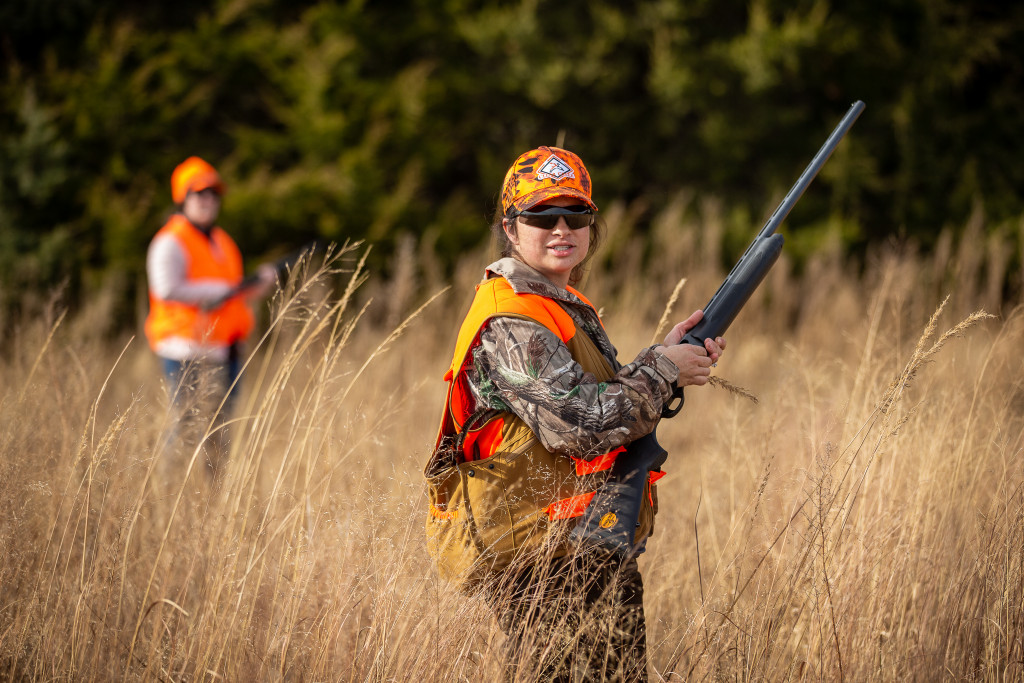
Practice and Shotgun Fit
Stephen Reynolds is a master-class skeet shooter with 40 years of gunsmithing experience. Stephen modifies and builds custom gunstocks out of his shop, Midwest Gunstocks, near Herman. Contact Midwest Gunstocks at 402-208-8080.
Greg Preston is a master-class sporting clay shooter and head coach of Blair’s high school trap team. He is a level one National Sporting Clay Association instructor, an NRA shotgun certified instructor and an Orvis-endorsed wing shooting instructor. Greg is also a hunting guide at Pheasant Bonanza.
I asked Stephen and Greg to provide insight on why practice and fit is so important in wing shooting.
Insights From Gunsmith Stephen Reynolds
What motivated you to become a gunsmith?
SR: I got into shooting because I had an interest. Then I started realizing that you can’t give a 10-year-old grandpa’s gun. Grandpa probably weighs 260 pounds and is 6 foot 2 inches – you can’t give his gun to an 80-pound wet kid, and then laugh and take it away because the gun threw him on his butt. I think that’s abuse. If you’re going to get people to go out and shoot, you need to make sure that their tools are right and the process is right.
Another thing that got me going is if you go to the local gun store – there are guys that do hunt and shoot, but 99 percent of the time, they’re often the same guys who would’ve sold you golf clubs during the summer. It makes no sense to buy a $2,000-$3,000 rig from someone who has no clue which end of the gun they’re supposed to hold. That is a problem.
Seventeen percent of the country is also left-handed and is overlooked by the shooting industry. Manufacturers are trying to be better about it, but they really don’t want to make left-handed guns. Honestly, manufacturers don’t want to make super accurate guns. If they made them too accurate, then you wouldn’t buy as many shells.
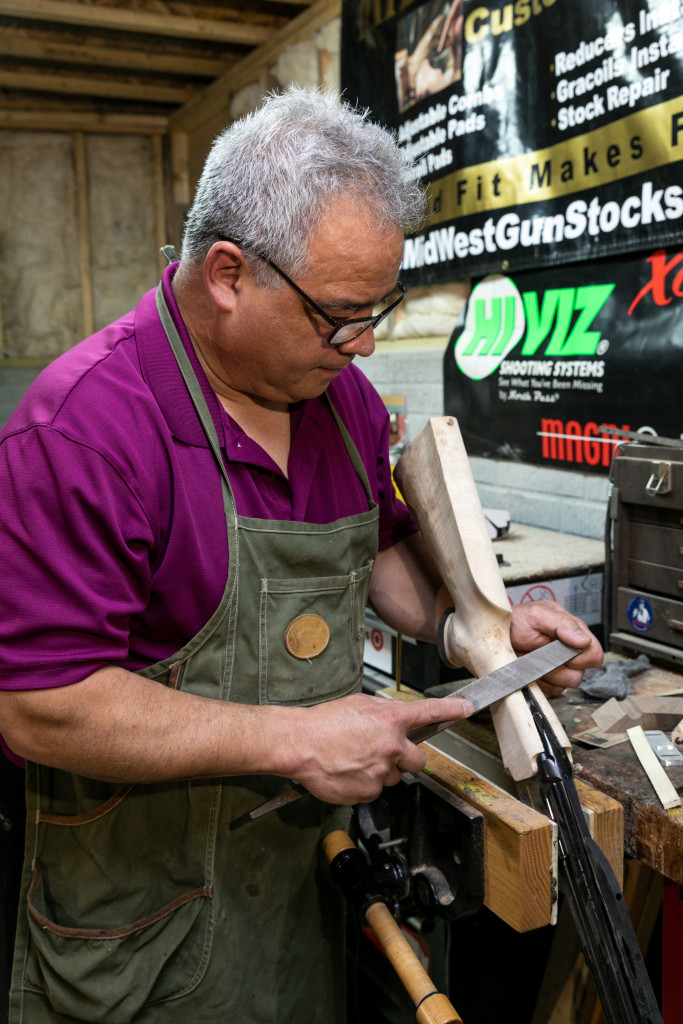
What mistakes do people make when they purchase a shotgun?
SR: The biggest mistake is fit. If it doesn’t fit, it doesn’t hit. If the gun isn’t looking where you are looking, I don’t care how expensive or new that model is.
I had a guy come in with a $22,000 Krieghoff, and he said, “I gotta get this figured out. My wife is [angry] at me. I bought it because I thought it looked cool, but I can’t hit [anything]. My Browning shoots better than this gun.”
Second, if you can’t pronounce the name of the gun, there’s a good chance you won’t be able to get parts for it. Make sure you’re not buying a one-run gun.
Also, know whether you’re left- or right-eye dominant. I do believe that if your eye is saying you’re a right-handed shooter, then you should follow through with your right eye, and vice versa.
When purchasing a shotgun, what should a buyer look for?
SR: Look for length of pull when mounting the gun – do you feel like you’re working for it or do you feel like it comes to you? Are you fiddling your head too much to resettle the gun? Look it over and make sure it’s in sound shape. A new gun can have a cracked stock or a blemished barrel, which can explode, crack or shatter.
Make sure you’re ready for the recoil. It’s rare, but ask if you can test-fire the gun. This is the strangest business. You can buy a car and test drive it, used or new, but to buy this $1,400 gun, you must purchase it to see if you like it, and then you can’t return it. The industry has that wrong. Every gun that’s sold should be allowed to be test fired.
How can a gunsmith help?
SR: I let the operator tell me what’s bothering them. The gun can’t do any talking. I can’t feel what they feel. Is it hurting you? Does it pop you in the chin? Does it rock your shoulder too much?
Then I look at how the gun fits and where the pad is resting on the shoulder. Before I do anything to the gun, I check to see if the shooter has a flinch by asking them to shoot with empty shells. If there’s a bad flinch, then we have to clean that up before proceeding. There’s no one-size-fits-all diagnosis for every person. You have to bring the patient in and go over it.
Also, kids change their shoes every six months, and the same goes for their gun. Kids grow rapidly, and their body mass and muscles are changing. You need to readjust the gun to the shooter as he or she grows. Do a gun check and gun fitting every six months, especially for youth shooters. For women, we say they gain muscle. For men – well, we get fat.
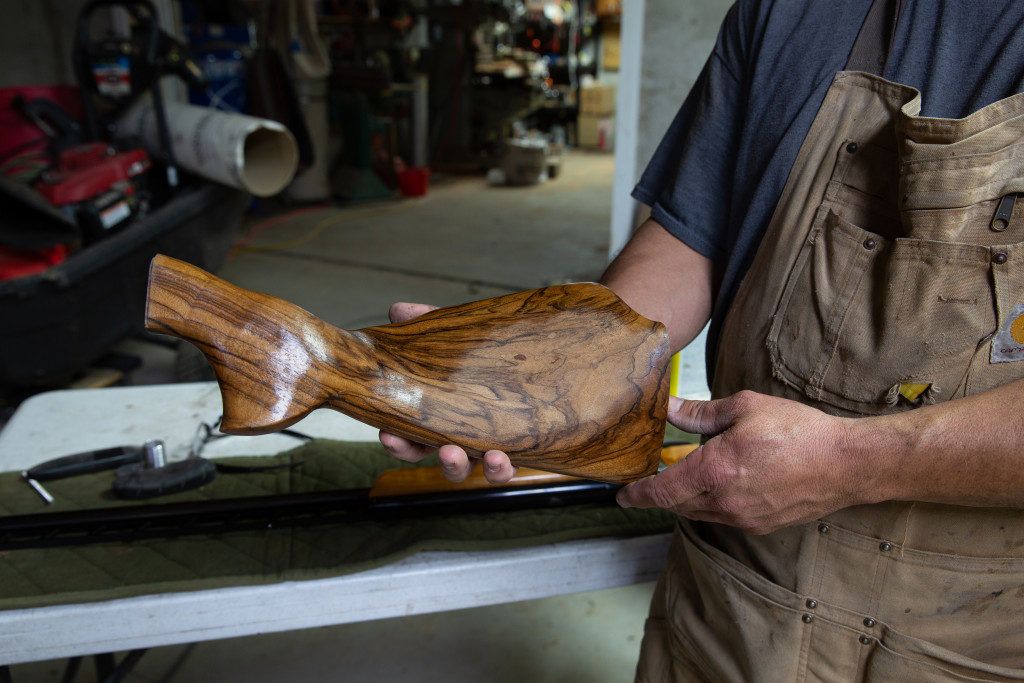
Any tips for the female shooter?
SR: Every female shooter should look up the biography of Annie Oakley and study it. That lady paved the road for every woman in this world. She destroyed the men in her class and was the best of the best.
In my years of teaching, I’ve found that women are typically better operators. They can process better. They are more detailed, and they listen. The world’s best shot [Frank E. Butler] went up against Annie Oakley and failed. He ended up marrying her. This is good inspiration for the new female shooter. They have more than hope – they have someone who has already done it.
How does gun fit translate to success in the field?
SR: Stop wasting shells and get your gun fitted. That’s my slogan. Always pattern your gun. Then get shooting lessons, which you shouldn’t take as a joke.
I’ve hunted big game and small game – I love all of it. I always teach people that it isn’t the thrill of the kill. I don’t want them to think about volume. I want them to think it’s a one-shot gun. One shot, one kill. It shouldn’t take three shots. Make it clean.
Insights From Shooting Instructor – Greg Preston
What is the No. 1 problem you see with hunters who don’t spend enough time shooting before the season?
GP: Hunters who don’t spend time shooting in the off-season are not fluent and comfortable with their shotguns during the hunting season. It’s like any other sport – practice is what makes a good wing shooter. Shooting sporting clays, such as trap and skeet, and making sure you learn good shooting fundamentals is one of the best ways to become a good bird shooter.
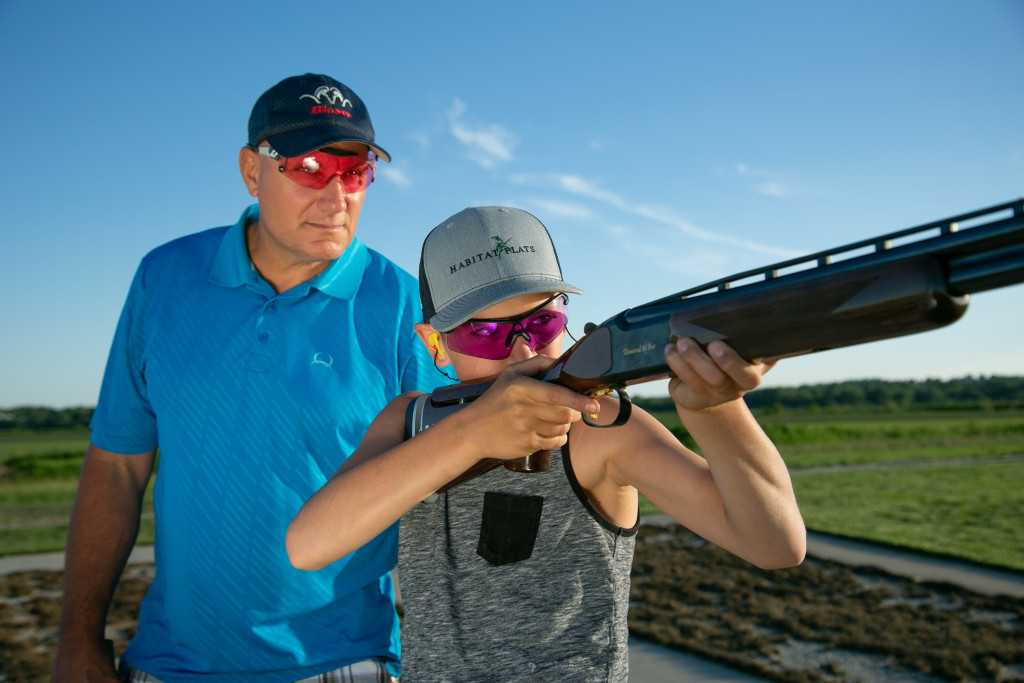
What are other mistakes?
GP: Another mistake I see in the field is that a lot of people rush the shot. Take that split second to adjust your feet and get to the leading edge of the bird. Take the time to make a good mount with your gun, which will help you get into a position where you will have plenty of swing and follow through to make a good kill shot.
In what ways can practicing at the range translate to more success in the field?
GP: As a hunter, shooting sporting clays is a game that was designed to help and improve the shooting skills of hunters in the field. Sporting clays will help you become smooth and comfortable with a shotgun. It will also help you understand foot positioning when shooting targets at different angles – whether it be a clay target or a live bird. The game will also help a person develop a good mount and a good follow through, which is crucial in bird hunting.
As a shooting coach, what’s the first thing you work on with a new student?
GP: With a new student, I always discuss safety first, and then I check to see if they are right- or left-eye dominant. Gun fit is also important. A lot of people try to shoot a shotgun like a rifle with one eye open. It’s always best to have both eyes open when shooting a shotgun.
What’s the most challenging aspect of shooting at a flying target?
GP: The most challenging aspects are keeping your eye on the target and not the barrel of the shotgun, and seeing how much lead is needed to kill birds moving at different speeds – whether it be a flushing bird such as a pheasant or quail, or shooting at a crossing bird such as a duck or goose.
Is there a certain skill that new students find most difficult to master?
GP: Every shooter is different, but I often find that people don’t trust their own hand-eye coordination, which will cause them to look at the barrel of the shotgun instead of focusing on the target.
People also have trouble keeping their head down on the gun, and then finally getting into position and mounting before shooting. By practicing during the off-season, you learn to trust yourself. You need to trust your lead hand. If you’re a right-handed shooter, your lead hand is your left hand, and vice versa. Trust that hand and follow with your eye to lock in and pull away from the target to make a clean shot.
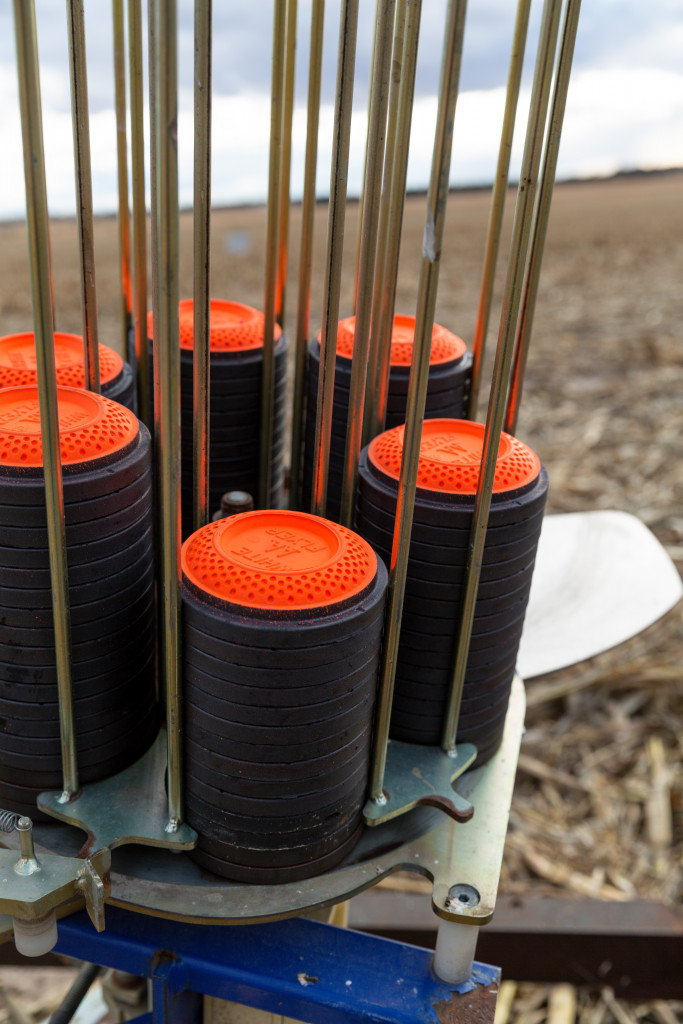
How can an instructor help to improve a hunter’s technique versus them practicing solo?
GP: A shooting instructor will help you pick out and fix problems that you didn’t even know you had. They can help simplify your movements and help you understand what moves to make in different situations. They will also teach you how to stand during hold points and break points of a clay target. Practicing by yourself and not understanding what you’re doing wrong or why you are missing will lead you to develop bad habits. And for young shooters, it’s best to start with an instructor so that doesn’t happen. After a few lessons on clay targets, most people find that when they go hunting, the skills that they learned will automatically happen when a bird flushes.
How does a hunter or shooter get connected with an instructor?
GP: You can find an instructor through the National Sporting Clays Association or the National Skeet Shooting Association websites. Or contact your local shooting range, and they should be able to connect you with someone. If not, contact me at 402-699-2317, and I will be able to provide lessons or help you get connected with an instructor in your area.
